
Abstract Art Movements: My Personal Journey from Cubism to Contemporary Abstraction
Explore abstract art through a personal lens. Discover the history, philosophy, and emotional depth of movements from Fauvism to contemporary forms, and how they shape my artistic vision. A comprehensive guide.
My Intimate Journey: Unlocking Abstract Art Movements from Cubism to Today
For the longest time, abstract art felt like a secret club I wasn't invited to. You know that feeling? Standing in front of a canvas, scratching your head, wondering if the artist was pulling a fast one, or if you were missing something profound? I remember a particularly baffling blue smudge with a zig-zag that my friend swore was a 'masterpiece of emotional turmoil.' All I saw was a messy wall. Honestly, for a while, I just accepted it wasn't for me. Why bother, when photography had already taken over the job of simply replicating reality with such uncanny precision? What else was there for art to do?
But then, something shifted. It wasn't a sudden epiphany, more like a slow, dawning realization, much like watching a complex recipe come together, ingredient by ingredient, until suddenly, the whole dish makes perfect sense and tastes incredible. Abstract art isn't about perfectly replicating reality; it's about interpreting it, distorting it, or sometimes, creating an entirely new one. It's about emotions, ideas, and the sheer joy (or terror, or confusion) of pure form and color. This guide isn't just a dry historical account; it's my journey, our journey, through the vibrant, sometimes perplexing, but always fascinating world of abstract art movements. From the bold colors of Fauvism and the fragmented views of Cubism to the raw emotions of Expressionism, the subconscious landscapes of Surrealism, the explosive energy of Abstract Expressionism, and the boundless forms of contemporary art, we'll explore how artists, from the early 20th century to today, broke free from convention and redefined what art could be, and I'll share what I've learned about their history, philosophy, and enduring impact. And maybe, just maybe, we'll unlock a new way of seeing for you too. Ready to dive in with me?
The Dawn of Abstraction: Shattering Reality, One Canvas at a Time
Before we fully plunge into the more familiar, let's cast our eyes to the very early rumblings of abstraction. It felt like artists were taking cues from Post-Impressionist masters like Paul Cézanne, who had already begun to simplify and geometrise natural forms, nudging art away from strict realism. This period, often shaped by societal upheaval like the lead-up to World War I, saw a multitude of artists challenging traditional representation simultaneously. It wasn't a single 'aha!' moment, but rather a collective realization among many artists that art could be so much more.
Take, for instance, Fauvism, emerging in France around 1905. Though not purely abstract, artists like Henri Matisse used shockingly intense, non-naturalistic colors to express emotion rather than describe reality, boldly asserting color's independence. This liberation of color from its descriptive duty was a crucial step, paving the way for more radical departures from representation.
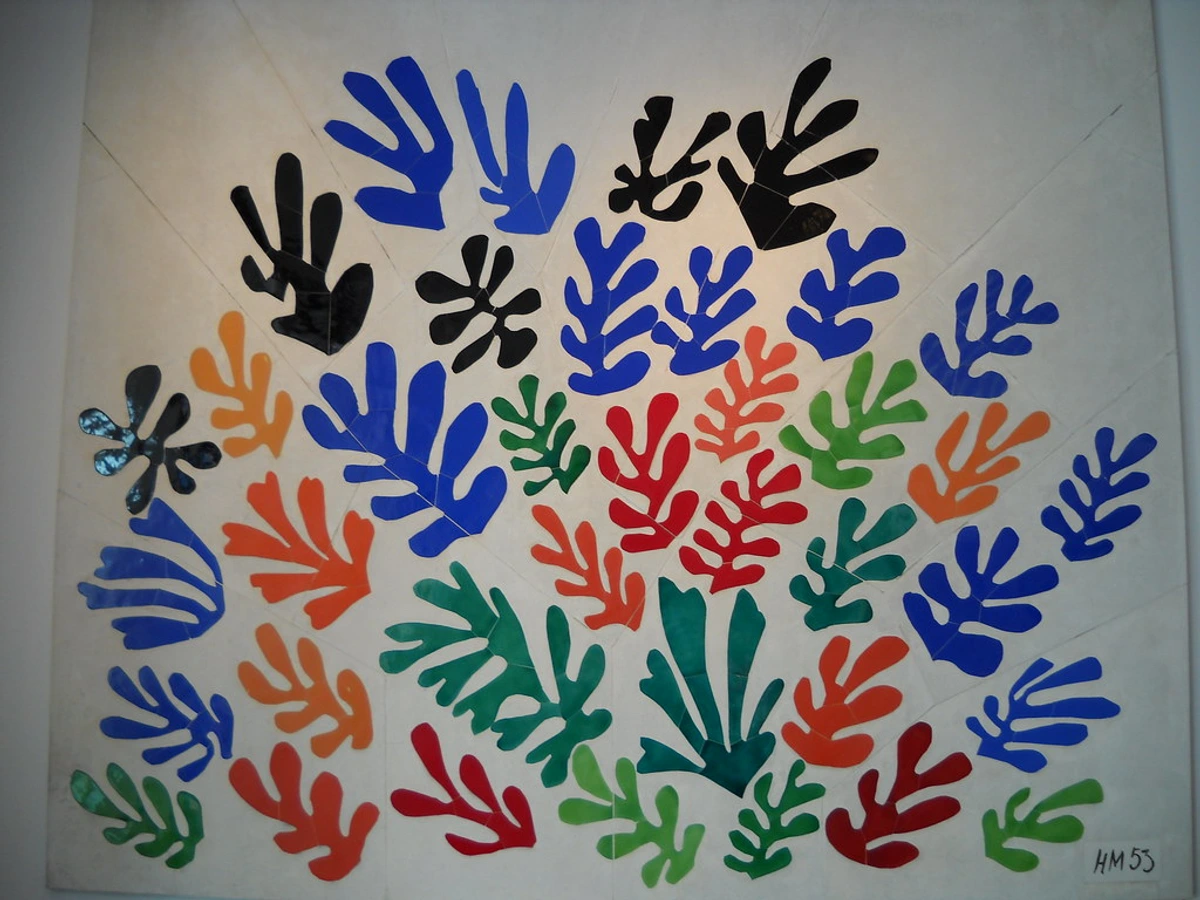
Then, in Italy, Futurism burst forth, obsessed with movement, speed, and the dynamism of modern urban life and technology. In a world rapidly industrializing and reeling from technological marvels like automobiles and airplanes, Futurists sought to break free from the past, celebrating the future with artworks that captured the blur and energy of modern life. Artists like Umberto Boccioni fragmented forms to suggest motion and the blur of speed, pushing beyond static representation, famously seen in his sculpture, "Unique Forms of Continuity in Space," which seems to melt and flow with kinetic energy.
Meanwhile, in Russia, Suprematism emerged with Kazimir Malevich's bold vision of pure geometric forms – squares, circles, triangles – detached from any worldly meaning, aiming for spiritual purity and a transcendent, non-objective reality. It was a radical step, almost a declaration that art could exist for its own sake, beyond representation and focused purely on essential forms. And across Europe, a constellation of artists, often influenced by non-Western art forms, began to truly question the very nature of perception and the spiritual role of art itself. Wassily Kandinsky, often credited with the first purely abstract paintings, profoundly explored the spiritual in art, seeing color and form as direct expressions of the soul, much like music. His early works, like "Composition V" or "Improvisation 28," exemplify this pioneering leap into non-objectivity.
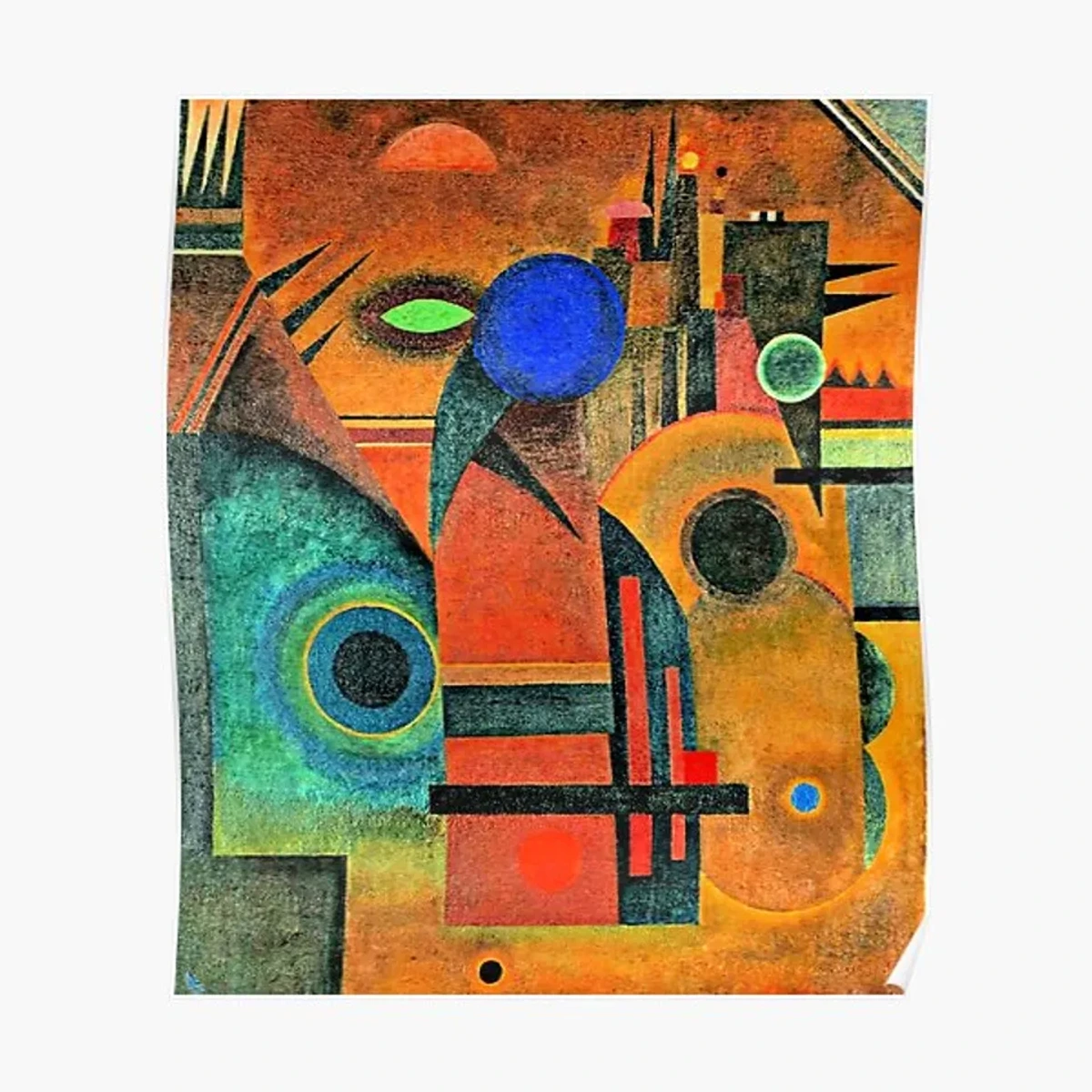
In the Netherlands, De Stijl (The Style) sought universal harmony through strict geometric grids, primary colors, and straight lines. It's like they were trying to distil the entire universe down to its most fundamental, purest visual elements. Its most famous proponent, Piet Mondrian, articulated his artistic philosophy as Neo-Plasticism, aiming for an art that transcended individual emotion to achieve universal aesthetic principles and reflect the underlying order of the cosmos through balanced compositions.
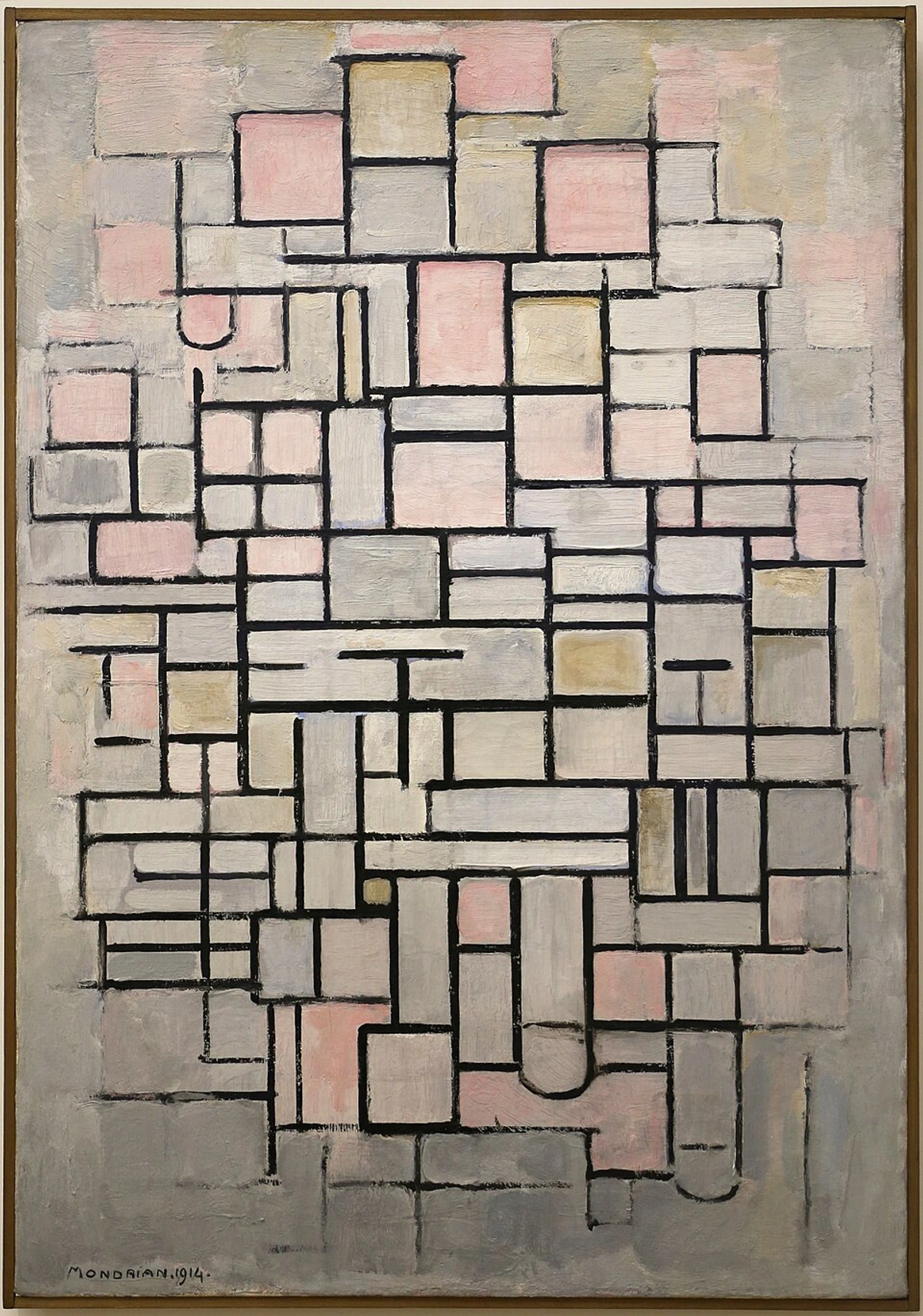
From this collective explosion of artistic will, each striving to redefine art's purpose, the path felt almost inevitable towards a deeper fragmentation. As these pioneers shattered old ways of seeing, what echoes do you feel in their radical visions today?
The Journey Continues: Cubism – Breaking the Mold into a Thousand Pieces
My first real encounter with Cubism felt a bit like trying to read a map drawn by someone who'd had too much coffee and decided to show all possible routes simultaneously. You see, when I first saw a Cubist piece, I thought, "Well, that's just... broken." But then I started to understand the intent behind the fragmentation. It wasn't about breaking things just for the sake of it; it was about showing a subject from multiple viewpoints at once, collapsing time and space onto a single plane. It's a bit like when you're telling a story, and you try to explain not just what happened, but how it felt, and why it mattered, all at once. It's ambitious, often unsettling, and ultimately, profoundly insightful.
The genius of Cubism, pioneered by visionaries like Pablo Picasso and Georges Braque, was its audacious rebellion against traditional perspective, influenced by African sculpture's geometric forms and the early 20th-century fascination with new scientific theories of space and time. New understandings of relativity and quantum physics, which challenged static perceptions of the world, likely resonated with artists exploring multiple viewpoints simultaneously. Instead of presenting a single, fixed view, they deconstructed objects and figures into geometric forms, then reassembled them in an abstract arrangement. This groundbreaking shift compelled viewers to engage with the canvas in a new, intellectual way.
The movement itself evolved, often categorized into two main phases. Analytic Cubism (roughly 1907-1912) was characterized by its muted, monochromatic palette and extreme fragmentation, dissecting subjects into intricate, overlapping planes to analyze them from every angle. It felt like a scientific inquiry into form, reducing subjects to their essential geometric components. Then came Synthetic Cubism (roughly 1912-1919), which introduced brighter colors, simpler forms, and perhaps most famously, collage. Artists, including figures like Juan Gris, whose work brought a more systematic and colorful approach to Synthetic Cubism, began incorporating real-world elements like newspaper clippings or wallpaper into their work – think of Picasso's "Still Life with Chair Caning" – adding texture and a playful blurring of art and reality. This use of new materials was a bold statement, pushing the boundaries of what art could be. A related offshoot, Orphism (also known as Simultanism), took Cubism's fragmentation and infused it with vibrant, pure colors, moving towards even greater abstraction and emphasizing the lyrical qualities of color and light. And honestly, who doesn't love a good challenge?
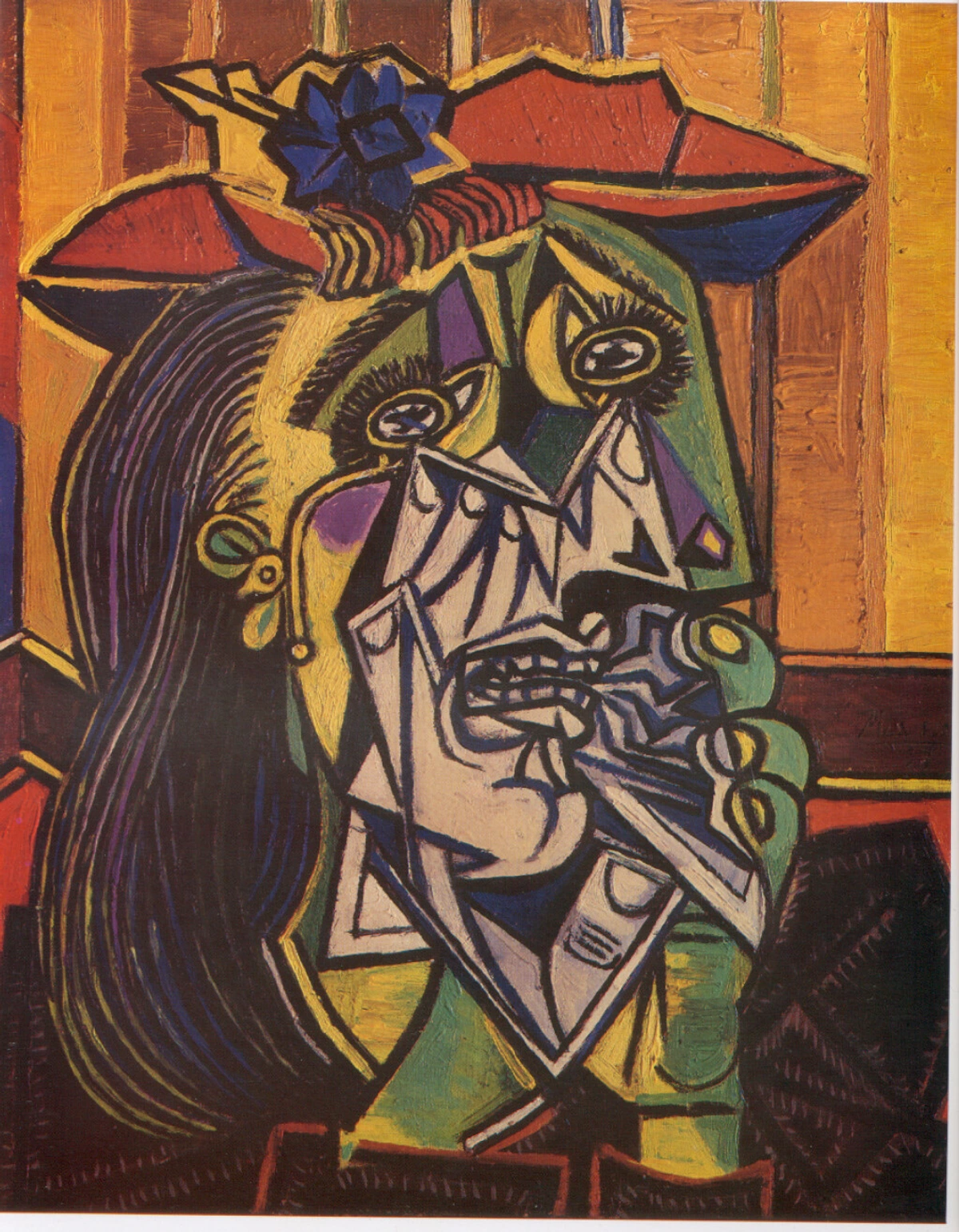
So, Cubism broke down the world with intellect and geometric precision. If Cubism shows multiple facets at once, what hidden angles do you think it reveals about how we perceive the world? Let's explore the raw power of Expressionism.
Feeling It Out: Expressionism – Emotion Unbound
If Cubism was about the intellect breaking down reality, Expressionism was about the gut feeling, the raw, unfiltered emotion spilling onto the canvas. I remember a period in my own life where everything felt amplified, colors seemed brighter, shadows deeper, and emotions were just... more. That's what Expressionism feels like to me. It's less about the objective world and more about the artist's subjective internal state. It’s like when you’re utterly overwhelmed with joy or sorrow, and suddenly the world around you seems to mirror that intensity, twisting and contorting to reflect your inner landscape.
This broad umbrella of German Expressionism, rooted in a post-Nietzschean philosophy emphasizing primal instincts and a sense of existential unease, found its voice through groups like Die Brücke (The Bridge) and Der Blaue Reiter (The Blue Rider). Artists like Ernst Ludwig Kirchner and Franz Marc used vivid, often jarring colors, distorted figures, and bold brushstrokes to convey psychological and emotional states rather than physical reality. Die Brücke artists, formed in Dresden, often depicted urban alienation and the anxieties of modern life with harsh lines and intense colors – a scream against industrialization and the societal pressures leading to World War I. Their emotional intensity was visceral and confrontational. Other key figures included Karl Schmidt-Rottluff and Erich Heckel. Der Blaue Reiter, founded in Munich by Wassily Kandinsky and Franz Marc, leaned more towards spiritual and symbolic expression, believing art could reveal inner truths through abstract forms and colors, almost like a mystical journey, with artists like August Macke also contributing. Both groups, however, shared a rejection of purely decorative or sentimental art in favor of conveying raw, powerful emotions, often conveyed through thick impasto and aggressive mark-making.
While often associated with Germany, a parallel current, Austrian Expressionism, emerged with artists like Egon Schiele and Oskar Kokoschka. Their work, though sharing the emotional intensity, often delved into more stark, psychological portrayals of the human condition, with raw, almost brutally honest self-portraits and figures. Sometimes, looking at an Expressionist piece, you can almost feel the artist's angst or ecstasy emanating from the canvas.
![]()
So, if Expressionism laid bare the artist's inner world, what happens when that world extends into the realm of dreams, the subconscious, and the truly bizarre? In a world that often demands a composed exterior, how liberating do you think it is for art to fully embrace and project raw emotion? Let's step into the captivating, often unsettling, landscape of Surrealism.
Dreaming Awake: Surrealism – The Unconscious Canvas
Emerging in the 1920s in Paris, Surrealism, spearheaded by figures like André Breton, wasn't strictly an abstract movement in its entirety, but its profound exploration of the subconscious mind and dream imagery profoundly influenced abstract art. Born from the idea that the rational mind was too limiting, and true creativity lay in the liberation of thought, often inspired by Freudian psychology, artists sought to bypass conscious control through techniques like 'psychic automatism' – automatic drawing or writing, letting the hand move freely without deliberate intention. This led to fascinating biomorphic (life-like) abstractions, where forms seemed to melt, flow, or morph into evocative, non-representational shapes, as seen in the works of artists like Yves Tanguy or Joan Miró. Other techniques like frottage (rubbing) or decalcomania (transferring patterns) also inadvertently generated abstract textures and forms. Surrealism showed artists that imagination was an infinite wellspring for abstraction, proving that art didn't have to make logical sense to be deeply meaningful, often delving into the "uncanny" or "marvelous" to evoke profound inner states.
After the dreamscapes of Surrealism opened the doors to the unconscious, and with Europe grappling with the aftermath of war, the artistic epicenter shifted. New York, a city bursting with new energy and a diverse population, became the stage for a different kind of freedom, a raw, uninhibited force that would define a new American voice in art. If our dreams are a canvas for our deepest thoughts, what abstract forms do you imagine your own subconscious might create? Let's explore Abstract Expressionism.
The American Roar: Abstract Expressionism – Action and Soul
After the turmoil of two world wars, the artistic epicenter shifted from war-torn Europe to New York, giving rise to the New York School and a seismic shift known as Abstract Expressionism. This movement always reminds me of those moments when you just have to get something out, when words fail, and the only way to communicate is through raw, uninhibited action. It’s like a frustrated sigh that turns into a full-blown scream, or a gentle whisper that becomes a roaring waterfall. It's about letting go and trusting the process, a deep dive into the human psyche often influenced by post-war existentialist thought and the raw energy of American individualism.
This movement broadly split into two distinct, yet equally powerful, approaches. Action Painting, famously exemplified by Jackson Pollock's dramatic "drip paintings," focused on the process of creation itself. The canvas, often of immense scale, became an arena for a physical, almost ritualistic performance, with paint dripped, splattered, and thrown to capture raw energy and subconscious impulses. It was about the gestural mark, the trace of the artist's presence, a direct channeling of emotion. Then there was Color Field Painting, championed by artists like Mark Rothko, Barnett Newman, and Clyfford Still. Here, the focus shifted to large, luminous fields of color, designed to evoke a meditative, spiritual, or sublime emotional response. These artists weren't just painting; they were performing on the canvas, channeling their subconscious directly through innovative techniques like pouring, staining, and thick impasto, often employing deep color theory to create their profound effects. The sheer scale and energy of these works are something to behold in person.

It’s a movement born from a desire for authenticity, a rejection of pre-conceived notions, and a deep dive into the human psyche. It truly was a moment where art mirrored a nation grappling with its identity, finding freedom in boundless abstraction. Considering the raw energy of Action Painting and the meditative depths of Color Field, which approach resonates more with your own inner landscape?
Beyond the Canvas: Contemporary Abstraction – A Universe of Forms
So, what happens when artists have already broken all the rules? They make new ones, of course, or perhaps, they realize there were no rules to begin with. Contemporary abstraction, in my humble opinion, is a glorious, chaotic playground. It’s less about a singular, dominant style and more about an endless exploration of possibilities, a continuous dialogue with art history. It’s like looking at a vast, diverse city skyline, where every building has its own unique architecture, yet they all somehow contribute to the same urban tapestry. I often find myself thinking about how each artist takes a piece of history and twists it into something utterly new, making a mark that is uniquely their own. It’s an ever-evolving conversation, never settling into one rigid definition.
Today, abstract art encompasses everything from digital manipulations and minimalist installations to vibrant, large-scale paintings and intricate conceptual pieces. Here's a glimpse into its diverse landscape:
- Minimalism: Post-Abstract Expressionism, Minimalism emerged as a counter-narrative, reducing art to its most essential forms and emphasizing objectivity and the viewer's physical experience of space and the artwork as an object, rather than the artist's emotion. Often utilizing industrial materials, the artwork became a self-referential entity.
- Post-Painterly Abstraction: A related development, a term coined by Clement Greenberg, saw artists like Helen Frankenthaler and Morris Louis move away from the gestural intensity of Abstract Expressionism towards flatter fields of color, often staining raw canvas to achieve pure, uninflected hues.
- Op Art (Optical Art): Delighted in geometric abstraction, playing with visual illusions and perception, creating dynamic optical effects that challenge the eye.
- Neo-Expressionism: We also see a resurgence of Neo-Expressionism, for example, with artists like Jean-Michel Basquiat injecting raw, street-art inspired emotion and socio-political commentary back into the abstract realm, often blending figuration with gestural abstraction. This movement also saw a broader European resurgence in the late 1970s and early 80s, with figures like Anselm Kiefer and Georg Baselitz exploring history, myth, and personal trauma through large-scale, often brutal, painting with a raw, visceral quality.
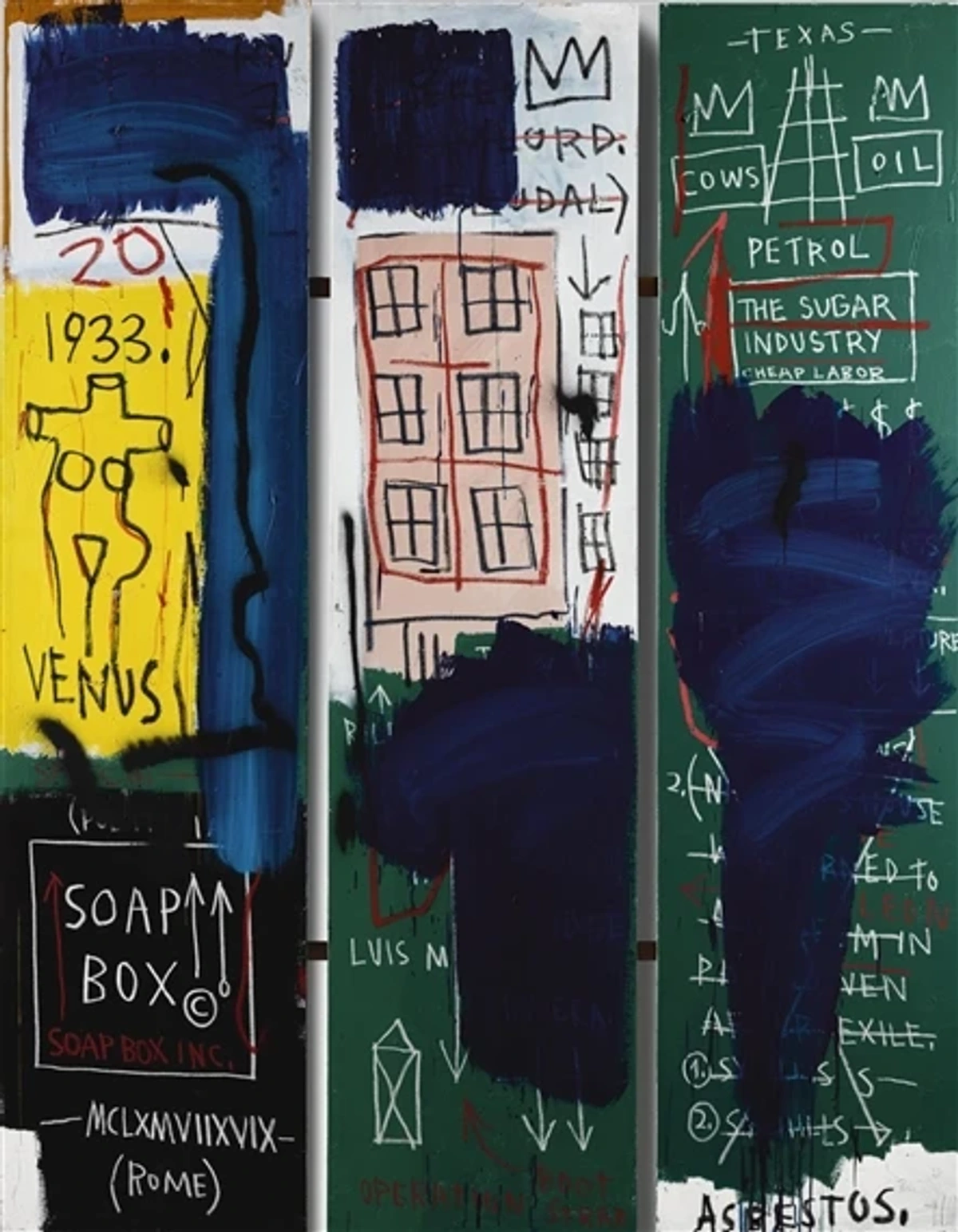
- Process Art: Here, the method of creation is as important as the final product, often emphasizing the inherent properties and transformation of materials. Artists like Eva Hesse and Richard Serra allowed chance, gravity, and the material itself to dictate form, creating works that were constantly evolving. Robert Rauschenberg's "Combines," which brought together painting and sculptural elements from found objects, also exemplifies a process-oriented approach. This approach also influenced artists like Gerhard Richter whose scraped and blurred canvases explore chance, materiality, and perception in a unique painterly way.
- Conceptual Art's Influence: The idea or concept behind the work takes precedence, often manifesting in non-traditional or minimal forms that challenge the very definition of art. For instance, Sol LeWitt's wall drawings, while often geometric, are primarily defined by the instructions for their creation, abstracting the artistic act itself.
- Lyrical Abstraction: A softer, more fluid counterpoint to the rigid geometries or aggressive gestures, focusing on expansive color fields and organic forms.
Adding to this rich tapestry, movements like Arte Povera (Italian for "poor art"), which emerged in Italy in the late 1960s, challenged commercialization by using everyday, unconventional, and 'poor' materials like soil, rags, and industrial debris to create often ephemeral and conceptual works, many with strong abstract qualities. Similarly, Land Art, also from the late 60s, pushed art out of galleries and into natural landscapes, where artists created large-scale, site-specific works using natural elements, often resulting in abstract forms that interacted directly with the environment. Furthermore, the rise of Feminist Art from the 1970s onwards often intersected with abstraction. Female artists used abstract forms, patterns, and materials traditionally associated with 'women's work' (like textiles or craft) to challenge patriarchal art histories, explore identity, gender, and societal roles, and give voice to underrepresented experiences through non-representational means.
Artists are exploring texture, light, space, and materiality in ways previous generations couldn't even dream of, incorporating new media, found objects, and digital technologies. From intricate mixed-media pieces to large-scale public installations, the materiality and spatial impact of abstract art continue to expand, often engaging with the role of galleries and critics in shaping its reception. We also see abstract principles at play in graphic design and data visualization, where forms and colors communicate complex information universally, transcending language.
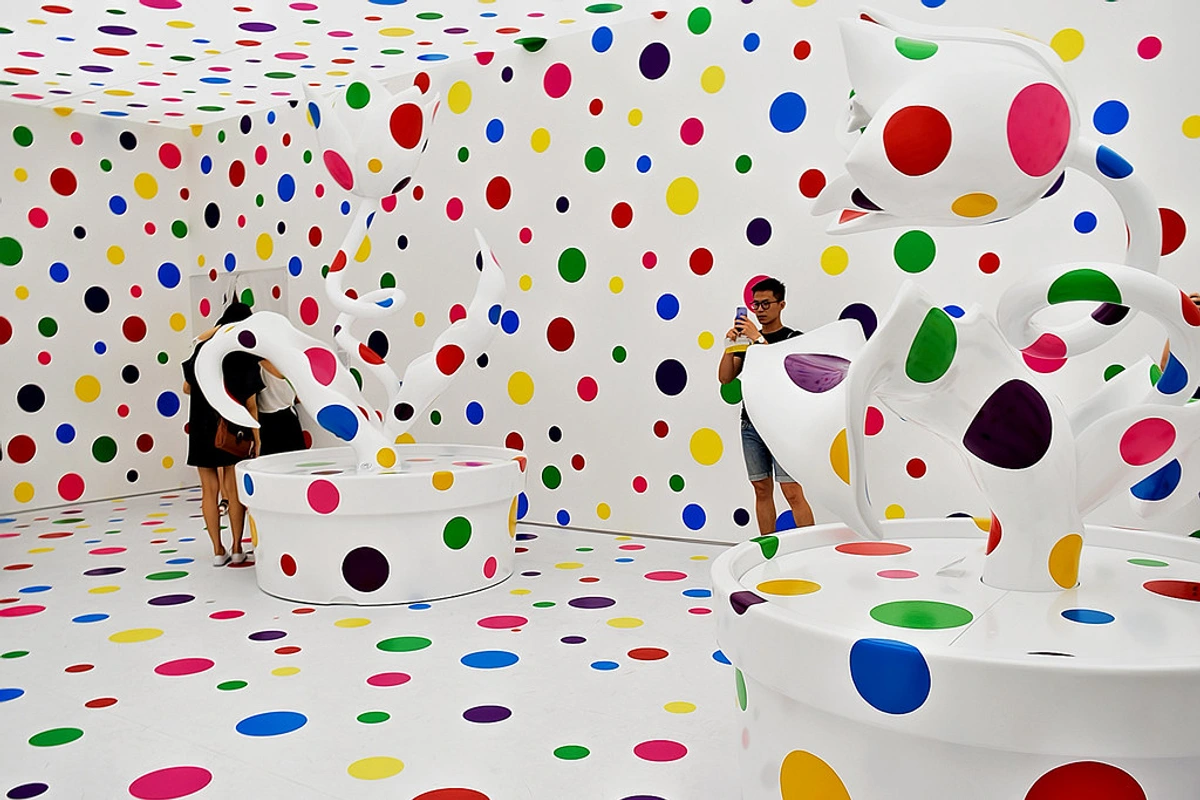
This continuous evolution is what makes art so exciting to me; it's always moving forward, always questioning, always reflecting the current human condition. For those looking to dive into creating their own abstract pieces, my article on How to Abstract Art offers some practical starting points. It’s a rewarding journey, I promise.

With abstraction continuously expanding its definitions, what new materials or technologies do you imagine artists will use to express the human condition tomorrow?
Why Does It Matter? My Personal Connection to Abstraction, and Yours
So, after all this exploration, you might be asking: why does it truly matter? Let me tell you, for me, this journey through abstract art movements isn't just an academic exercise; it's a reflection of my own artistic path, a profound conversation between history and my studio. Each movement, in its own way, echoes a part of my struggle and discovery as an artist.
The freedom to express without being bound by literal representation? That's golden. The ability to convey emotion through color and form alone, perhaps even in abstract patterns that influence modern architecture and design? Absolutely essential. Think of the clean lines and geometric compositions of Bauhaus architecture, or the dynamic interplay of color and form in De Stijl-inspired furniture and interior design – these are direct descendants of abstract principles, shaping our built environment in subtle yet profound ways. Abstract symbols, too, are the lingua franca of graphic design and user interfaces, communicating universally without words. The joy of pure creation, of seeing something new emerge from the canvas? That's what keeps me coming back to the studio every single day.
Beyond the personal, abstract art has profoundly impacted society, challenging our perceptions, offering new ways to interpret the world, and providing a powerful outlet for collective emotions. Historically, movements like Expressionism offered poignant social and political commentary, echoing the anxieties of their time without resorting to literal depictions. Contemporary abstraction continues this tradition, allowing artists to address complex issues through non-representational means. It reminds us that there's more to reality than what meets the eye, fostering open-mindedness and encouraging individual interpretation. What about you? How does art, abstract or otherwise, connect with your own journey or feelings?
I often find myself reflecting on this connection, seeking new ways to articulate the ineffable. In my own work, you'll find echoes of this exploration—the vibrant, emotional use of color inspired by Fauvism and Expressionism, the layered complexity of form reminiscent of Cubism, and the freedom of gesture found in Abstract Expressionism – all coming together in colorful, and often abstract pieces that invite you to look closer, to feel something, and perhaps, to see the world a little differently. If you're ever in 's-Hertogenbosch, you could even see some of these pieces at the artist's museum, experiencing the conversation between my inner world and the canvas firsthand. It’s a continuous experiment, much like life itself. If you're curious to see how these influences play out in my contemporary creations, feel free to browse my Art for sale and join this ongoing dialogue. How does abstract art resonate with your own experiences, and where do you see its subtle influence in the world around you?
Frequently Asked Questions about Abstract Art Movements
Sometimes, when I'm explaining abstract art to friends, their eyes glaze over, and I can almost hear the unasked questions buzzing in their heads. So, let me tackle a few common ones here, based on my own observations and those times when I finally did get it.
What defines abstract art?
At its core, abstract art moves away from representing external reality. It uses forms, colors, shapes, and gestural marks to achieve its effect, rather than depicting recognizable objects or scenes. It exists on a spectrum, from semi-abstract works where forms are recognizable but heavily distorted, to purely abstract, non-representational pieces. It's about what the art makes you feel or think, rather than what it shows you. Think of it like music without lyrics – it evokes emotion purely through sound and rhythm.
What are some common misconceptions about abstract art?
The biggest one I hear is, "My kid could do that!" This often overlooks the skill, intention, and profound art historical context. Another is that it's "meaningless" or "lazy." In reality, abstract art often demands a deeper engagement, inviting personal interpretation rather than dictating it. It’s a conversation, not a monologue. And contrary to popular belief, abstract art is rarely truly 'apolitical' or 'escapist'; many movements, like Expressionism or even certain contemporary works, are deeply rooted in social, political, or philosophical commentary.
How can I appreciate abstract art?
Honestly, the best way is to drop your expectations and just feel. Don't try to "figure out what it is" in a literal sense. There's no single "correct" interpretation, which is part of its beauty. Ask yourself: What colors am I seeing? How do they make me feel? What kind of energy does the piece have? Does it evoke a memory or an emotion? If you're struggling to connect, sometimes a little research into the artist's background, the movement's context, or even the title of the work can unlock new layers of understanding. Look at it for what it is rather than what it isn't. And sometimes, it's okay to just not connect with a piece. Art is subjective, and that's perfectly fine. Just keep looking, keep an open mind, and you'll find what speaks to you. You can read more about how to engage with it in my article Decoding Abstract Art: A Guide to Finding Meaning in Non-Representational Works.
What's the difference between Cubism, Expressionism, and Abstract Expressionism?
Great question! While all are abstract in some way, their approaches and intentions differ significantly. Here's a quick comparison:
Movement | Time Period (Approx.) | Key Focus | Primary Style Characteristics | Example Artist(s) |
|---|---|---|---|---|
| Cubism | 1907-1919 | Deconstructing objects, multiple perspectives, intellectual inquiry | Geometric forms, fragmented reality, monochromatic (Analytic) or collage/brighter colors (Synthetic) | Pablo Picasso, Georges Braque |
| Expressionism | 1905-1920s | Expressing inner emotion, subjective experience, societal critique | Intense non-naturalistic colors, distorted figures, bold brushstrokes, raw angst | Ernst Ludwig Kirchner, Franz Marc, Egon Schiele |
| Abstract Expressionism | 1940s-1960s | Raw emotion, subconscious, process of creation, American individualism | Large scale, gestural brushwork (Action Painting) or expansive color fields (Color Field) | Jackson Pollock, Mark Rothko |
What materials do abstract artists use?
One of the most exciting aspects of abstract art is its boundless approach to materials. While traditional oil and acrylic paints on canvas remain popular, artists constantly push boundaries. Early abstractionists experimented with collage (Cubism) and unconventional mediums. Today, you'll find abstract art incorporating everything from industrial materials like steel and concrete (Minimalism, Arte Povera) to found objects, textiles, digital projections, light, sound, and even performance. The choice of material often becomes integral to the art's meaning, adding layers of texture, sensory experience, and conceptual depth. It's not just about what is painted, but what it's made of, and how that material choice can be a conceptual statement in itself, challenging our perceptions.
Is contemporary abstraction still evolving, and what about its value?
Absolutely! Art, much like humanity, is always evolving. Contemporary abstraction is a vibrant, diverse field that continues to push boundaries, incorporating new technologies (like AI-generated art or digital installations), diverse materials (from recycled objects to light and sound), and philosophical concepts. Artists today draw from centuries of art history while simultaneously forging new paths, creating immersive experiences and challenging traditional notions of the canvas. Regarding value and collectibility, abstract art, especially from recognized movements and artists, holds significant market value. The historical importance, rarity, and artistic impact of a piece, along with the artist's reputation, all contribute to its collectible status, making certain works valuable investments. It’s a truly exciting time to be an artist and an art lover. Dive deeper into its ongoing evolution here: The evolution of abstract art: key movements and their collectible value.
Conclusion: My Abstract Journey, and Yours to Begin
So there you have it – not just a historical overview, but my personal, whirlwind tour through some of the most pivotal abstract art movements, filtered through my own evolving understanding and appreciation. What started as a confusing mess eventually became a source of endless inspiration and a way to connect with the deeper currents of human experience. The freedom, the emotion, the sheer boundless creativity – it’s a constant dialogue that challenges and enriches. The world of abstract art, with its ceaseless capacity for reinvention and its direct appeal to the inner landscape, promises to continue surprising us, adapting to new technologies and societal shifts while remaining a profound mirror to the human condition. It's a journey of discovery, not just of art, but of oneself. I truly hope this has given you a fresh perspective, maybe even sparked a little curiosity to delve deeper. Don't be afraid to stand in front of a painting and just... feel. You might be surprised by what you find. And who knows, maybe someday our paths will cross, perhaps at my studio, or even virtually if you're exploring my timeline to see how my own artistic journey unfolds. The world of abstract art is vast, welcoming, and endlessly revealing, if you just give it a chance. Go forth, explore, and let abstract art surprise you. And please, if this journey resonated with you, I'd love to hear your own thoughts and connections in the comments below.




